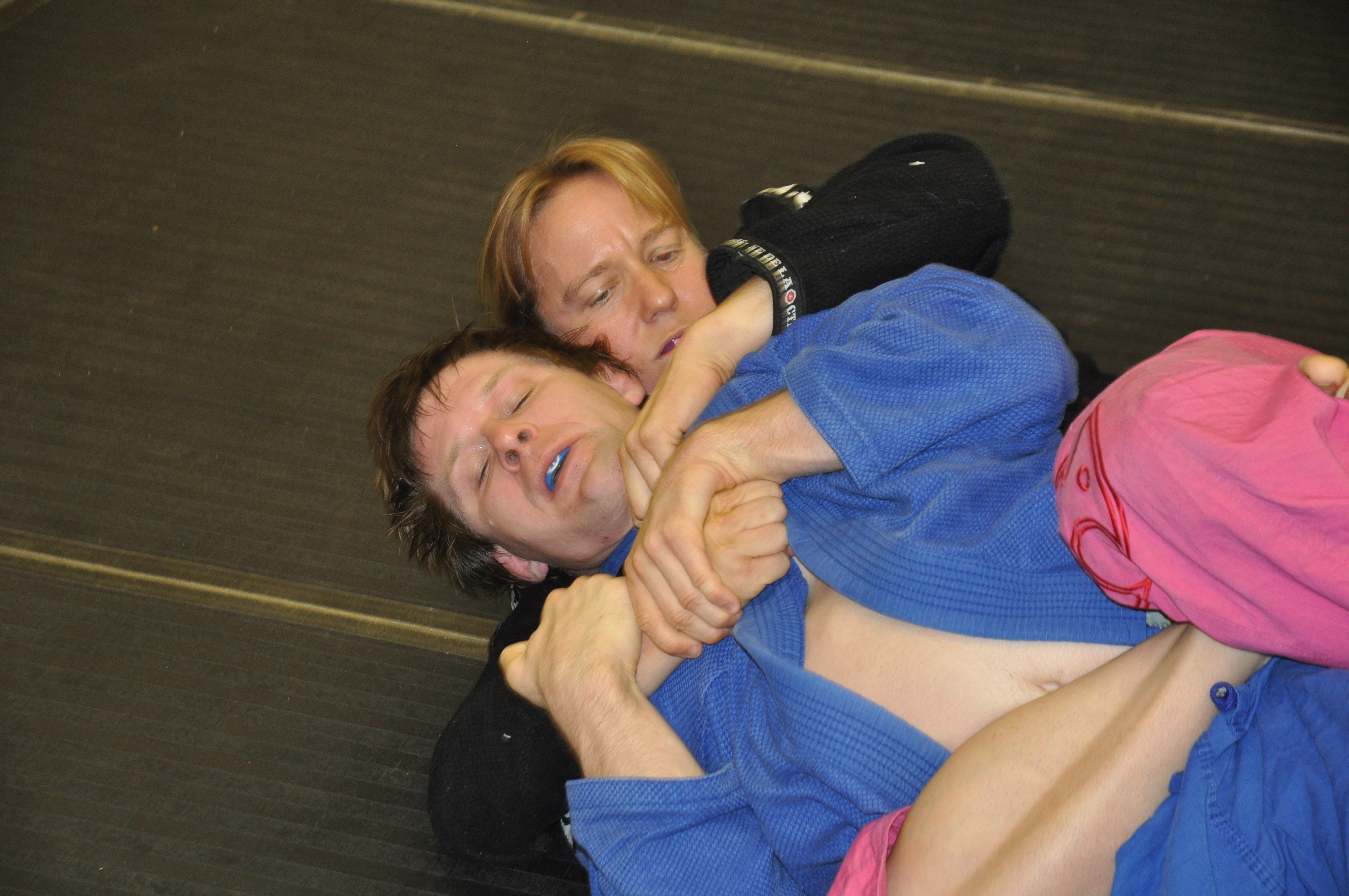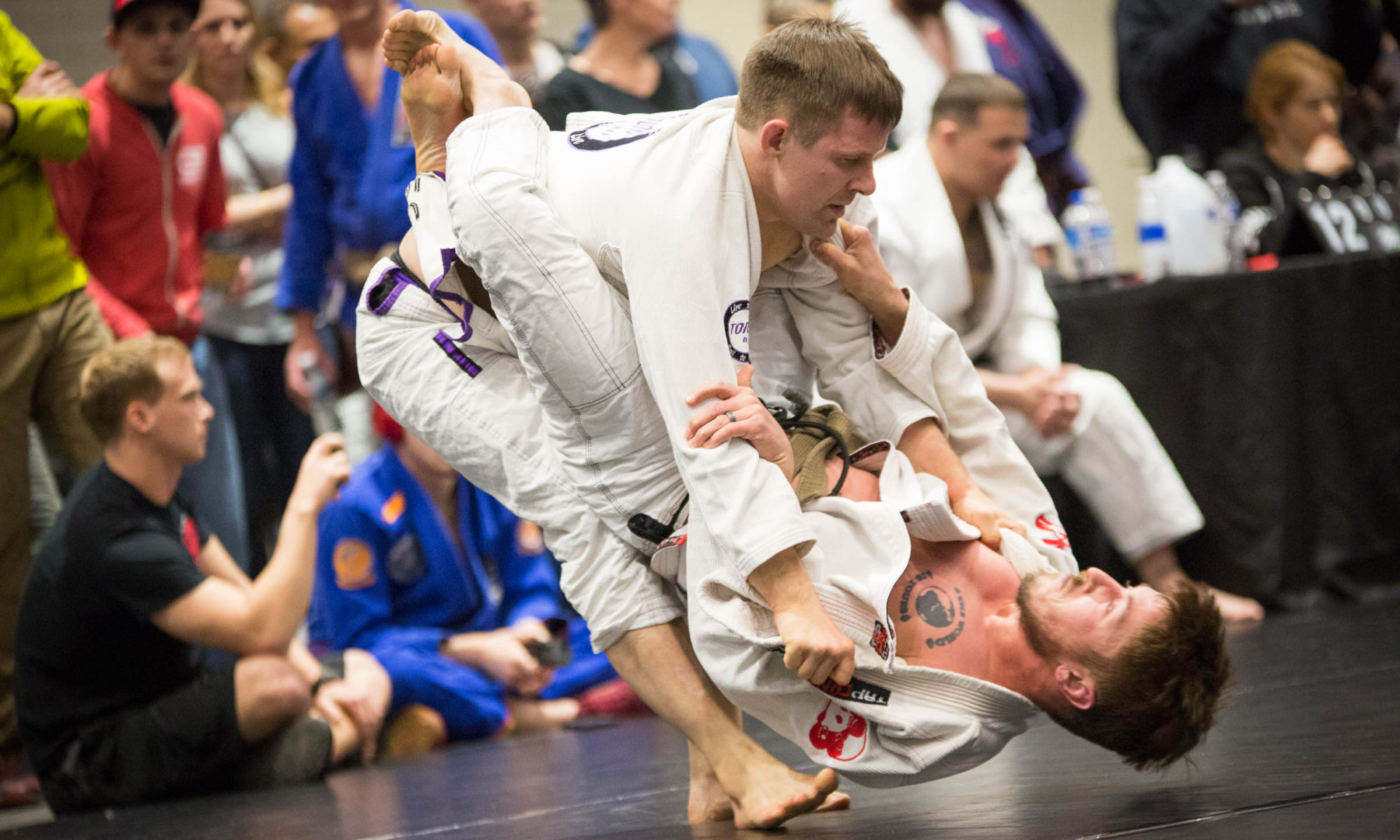It is sometimes said that if you ask 10 different black belts to show you the same technique, you’ll learn 10 different ways to do that technique — and they will all be correct.
That’s why it’s important to learn from multiple sources. Different people have different perspectives, and we all process information in different ways. While the fundamental principles that make a move work will never change, the details about how best to execute that move can vary from instructor to instructor.
This also holds true for concepts and approach. Just as travel offers you access to other points of view, tapping into sources of training knowledge can help you answer the big questions.
When I got my purple belt, I started to think about whether I should approach training differently. To answer this question, I did what I’ve done at every belt level: ask a black belt, or in this case, four of them.

I asked four different Royce Gracie black belts variations on the question, “how should I alter my training at this new belt level?” I got four valuable, distinct and related answers. I’m going to tell you what those answers were.
My bet is that, whatever your belt rank or goals, you find something to think about here.
1. Let Them Get Further
Jiu-jitsu is fundamentally about survival. Because our art is designed to give smaller, weaker people a chance to defend themselves against larger, stronger and more aggressive attackers, it’s essential that we have a top-notch foundation in surviving, defending and escaping from bad positions.
One of the great things about training consistently is that you get better. One of the only bad things about getting better is that you find yourself in these bad positions less often: when you start, you’re in danger all the time. As you improve, and as new white belts join the gym, getting put into dangerous spots is more likely to be a choice than a necessity.
So make that choice, and don’t just make it against the white belts who present minimal threat of submission even from dominant spots. You’re not getting better letting them crawl all over you, and if you get tapped, it’s clear you were letting the white belt work.
Instead, let mid-level and high-level blue belts get further toward putting you in danger than they have before. In fact, let them pass your guard and engage their attacks sometimes. If you get submitted, you know what to work on.

This requires you to check your ego, too: when you get promoted, it’s easy to get caught in the trap of thinking that you should never “lose” to lower ranks even in training.
But this is silly. Training is meant to help everyone improve, and no one improves if we keep having the same old rolls in the same old positions. The only way you lose at training is if you don’t use the time to get better.
My instructor says that getting better after purple belt is an art unto itself, and making sure you maximize training benefits is a good start.
2. Focus on Timing
So you know some techniques. That means you understand the component parts of, say, an armbar. You can go step-by-step and identify each of the dozen or so details that are necessary to complete the armlock.
Now take those dozen details and improve your timing so they blend into one motion. By and large, you won’t be armbarring purple belts if you go one step at a time.
The scissor sweep used to be one of my highest-percentage moves. I’d painstakingly work my setups and hit it regularly. Lately my success rate has decreased, and class last night showed me why: I have to drill until what used to be three moves becomes one fluid motion.
(I’ve never understood people who don’t want to drill, either, but that’s another story.)
3. Sharpen Your Sword
At blue belt, your job is to see and learn techniques. Focus on the fundamentals, but absorb and learn everything, including the stuff you don’t have a natural affinity for.
At purple belt, you start to have a game. There are things you excel at, things that come naturally to you. These are the techniques that serve you best in rolling, or in tournaments if you compete.
The advice: take the stuff you’re good at and make it deadly. Really define your strategy, tactics and setups. Make yourself complete (which we’ll get to in #4), but focus on the techniques that make you most dangerous.
A quote from this piece of advice: “Your instructor gave you a sword: now it’s time to sharpen it.”

4. Address Your Weaknesses
Full disclosure: this is the only bit of advice that was modified by a follow-up question. Typically, I try to ask black belts questions and then shut up while they answer me.
When I posed this question, though, I was met with the quite valid response: “Well, what are your goals?”
My answer was that I want to be well-rounded, to learn all aspects of jiujitsu. I enjoy competing, but I enjoy learning most of all. With that in mind, here was the counsel I got.
Take this list and rank your proficiency at them from best to worst: unarmed self defense, weapons defense, striking, takedowns, bottom mount, top mount, back defense, back offense, bottom side control, top side control, guard bottom, guard passing, and leg locks.
If you’re anything like me, you’ll have a very easy time separating out the things you feel good about from the things you need to work on.
When you have this information, you can combine your list of A-game techniques from #3 and your list of things you need to work on. That way you can ensure your top-level game is as refined as possible — while the rest of your knowledge lacks major holes.
To take a step back, I’d like to extend on the travel analogy from earlier. When you’re planning a trip, you consult with experienced travelers who have been to that area. When you get to the area and want to understand the culture, it’s helpful to ask locals.
If you want to learn anything, it’s best to ask the experts. That’s why, when I try to understand something about jiujitsu, I ask the black belts I know.
Jiujitsu is a long journey. It helps to have good guides. I know that the answers I got were useful for me, and I hope they were for you, too.

Reblogged this on Big Lewt and commented:
Very good information!
excellent article!